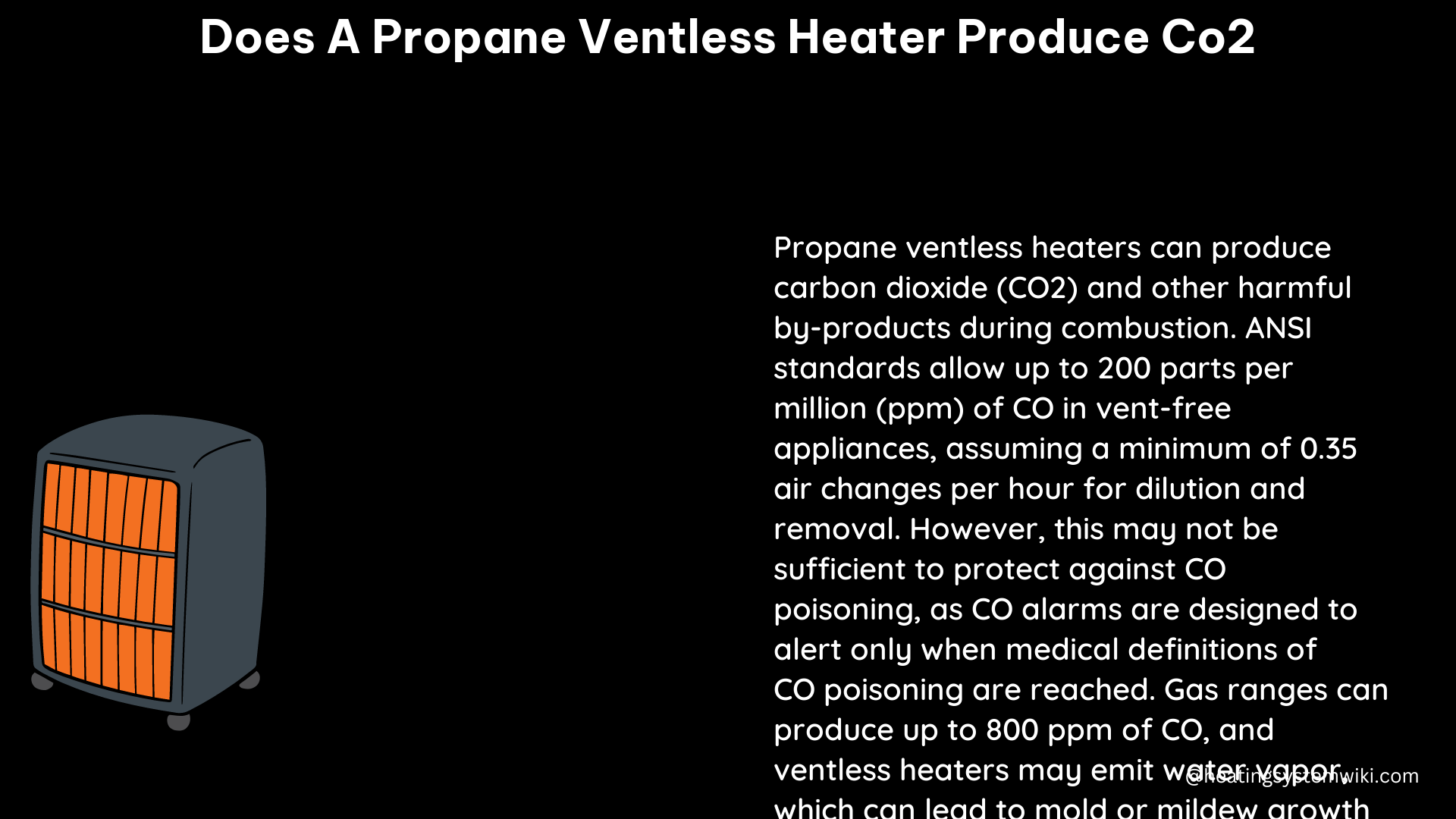Propane ventless heaters, also known as ductless or unvented gas heaters, have become a popular choice for supplemental heating in homes and small spaces. However, the question of whether these heaters produce carbon dioxide (CO2) is a valid concern for many homeowners. In this comprehensive guide, we will delve into the technical details, potential risks, and best practices for using propane ventless heaters safely.
The Combustion Process in Propane Ventless Heaters
When propane is burned in a ventless heater, the combustion process involves a chemical reaction between propane and oxygen. This reaction produces heat, water vapor, and carbon dioxide (CO2) as the primary byproducts. The combustion process in propane ventless heaters is designed to be highly efficient, with manufacturers claiming efficiency levels of 99.9% or higher.
However, even at such high efficiency, a small percentage of other harmful byproducts can still be produced, including:
-
Carbon Monoxide (CO): Carbon monoxide is a colorless, odorless gas that can be deadly if inhaled in high concentrations. Proper ventilation is crucial to prevent the buildup of CO in the living space.
-
Nitrogen Dioxide (NO2): Nitrogen dioxide is a reddish-brown gas that can cause respiratory irritation and damage to the lungs.
-
Soot: Incomplete combustion can lead to the production of soot, which can accumulate on surfaces and be inhaled, potentially causing respiratory issues.
-
Unburned Hydrocarbons: Unburned hydrocarbons, such as methane and propane, can also be released into the air, contributing to indoor air pollution.
Regulatory Standards for Propane Ventless Heaters

To address the potential risks associated with propane ventless heaters, regulatory bodies have established guidelines and standards to ensure the safety of these appliances. The American National Standards Institute (ANSI) allows a maximum of 200 parts per million (ppm) of carbon monoxide (CO) in the air for ventless heaters, assuming the house is adequately ventilated according to ASHRAE 62.2 standards.
ASHRAE 62.2 requires a minimum of 0.35 air changes per hour (ACH) to maintain proper ventilation in a home. However, it’s important to note that this standard assumes the house is properly ventilated, which may not always be the case in practice.
Potential Risks and Considerations
In addition to the production of CO2, propane ventless heaters can also pose other risks that should be considered:
-
Water Vapor Buildup: Ventless heaters can produce significant amounts of water vapor, which can contribute to a “stuffy” feeling in closed buildings and potentially lead to mold or mildew growth over time.
-
Oxygen Depletion: The combustion process in ventless heaters consumes oxygen, which can lead to a reduction in the available oxygen in the room, potentially causing respiratory distress or other health issues.
-
Incomplete Combustion: Improper installation, maintenance, or use of the heater can result in incomplete combustion, leading to the increased production of harmful byproducts.
-
Ventilation Concerns: Adequate ventilation is crucial for the safe operation of propane ventless heaters. Failure to provide sufficient ventilation can lead to the buildup of harmful gases, such as CO and CO2.
Best Practices for Using Propane Ventless Heaters
To mitigate the risks associated with propane ventless heaters and ensure safe operation, it’s essential to follow these best practices:
-
Ensure Proper Ventilation: Open windows or use mechanical ventilation systems to maintain adequate air circulation and prevent the buildup of harmful gases.
-
Monitor Carbon Monoxide Levels: Install and regularly test carbon monoxide detectors in the rooms where the ventless heater is used to ensure safe CO levels.
-
Follow Manufacturer’s Instructions: Carefully read and follow the manufacturer’s instructions for the proper installation, operation, and maintenance of the propane ventless heater.
-
Perform Regular Maintenance: Schedule regular maintenance and inspections by a qualified HVAC technician to ensure the heater is functioning correctly and safely.
-
Consider Alternatives: In some cases, it may be safer to use a vented gas heater or an electric heating system instead of a propane ventless heater, especially in well-insulated or airtight homes.
Conclusion
Propane ventless heaters do produce carbon dioxide (CO2) as a byproduct of the combustion process. However, the primary concern with these heaters is the potential production of other harmful substances, such as carbon monoxide, nitrogen dioxide, soot, and unburned hydrocarbons. By understanding the technical specifications, regulatory standards, and best practices for using propane ventless heaters, homeowners can make informed decisions and take the necessary precautions to ensure the safe and efficient operation of these appliances.
